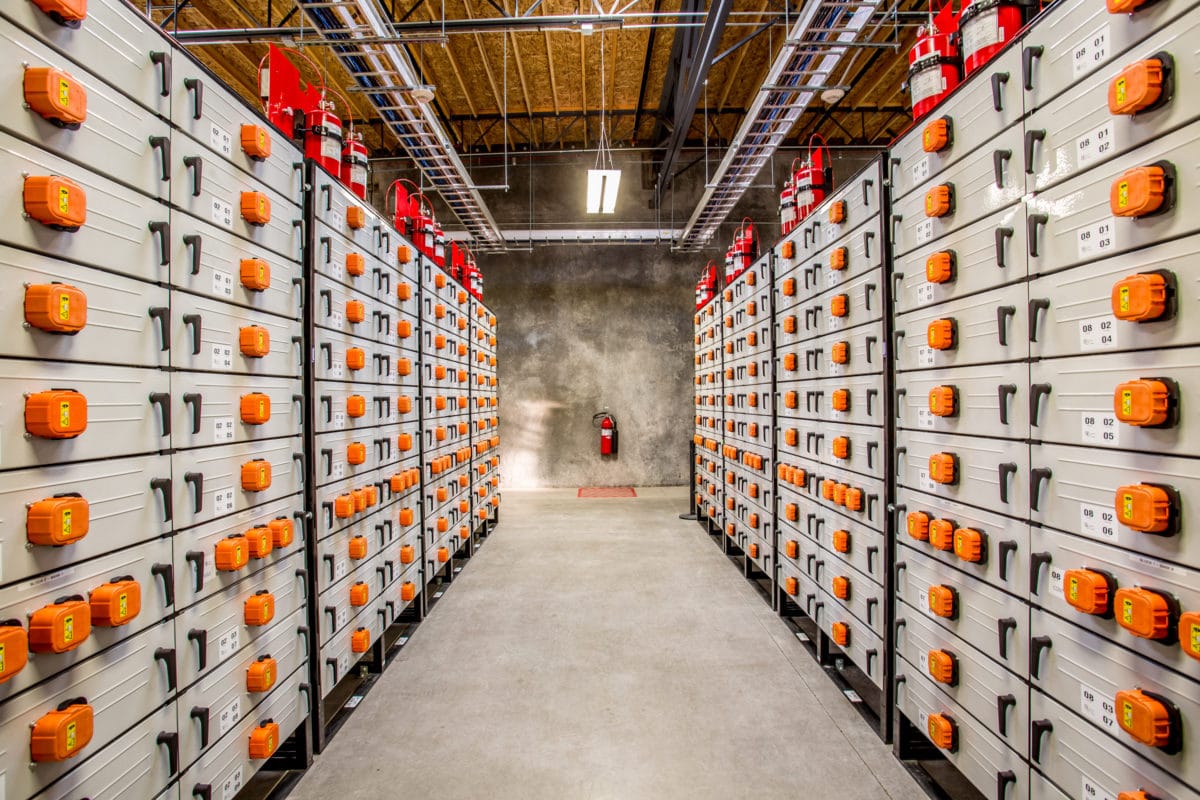Oregon law HB 2193, passed in 2015, requires Portland General Electric (PGE) and PacifiCorp to each have a minimum of 5 MWh of energy storage in service by January 1, 2020. The utilities have been encouraged to submit Requests for Information (ROI) to potential energy storage technology suppliers for projects that will be finalized by January 1, 2018. The ROIs will be due in June.
A so-called workshop process will be pursued in the state, in which various small technology demonstration projects will be approved to help determine economic feasibility for larger plants to follow.
“We’re seeking responses from established and experienced companies capable of providing safe, reliable energy storage systems that can benefit our customers,” said Joe Ross, energy storage project manager at PGE, in a company statement.
PGE has already begun testing energy storage at its Salem Smart Power Center with a 5 MW/1 MWh design. The utility also has tested two battery array sizes, a 50 MW and a 100 MW array, each with two-hour, four-hour, and/or six-hour duration capability.
PGE also has filed its Integrated Resource Plan, which “puts us on track to meet the state’s new renewable energy requirements: by 2020, more than 20 percent of the energy to serve our customers will come from renewable resources like wind and solar. By 2040, 50 percent will come from renewables,” a utility statement indicates.
PGE’s energy resource development plan includes the addition of 175 MW of renewable energy The utility also will seek to conserve 135 MW through energy efficiency, and avoid another 77 MW of consumption by encouraging customers to reduce peak demand use.
The Oregon Governor’s 10-Year Energy Action Plan of 2012 states: “Storage: Numerous storage options – including battery-based or pumped energy storage – can also increase the ability to balance out intermittent resources, such as wind or solar, and provide an alternative to building new infrastructure, such as transmission line expansion. As battery technology continues to become more efficient and the need to integrate more diverse generation resources increases, battery-based energy storage has the potential to offer a cost-competitive option.”
This content is protected by copyright and may not be reused. If you want to cooperate with us and would like to reuse some of our content, please contact: editors@pv-magazine.com.









By submitting this form you agree to pv magazine using your data for the purposes of publishing your comment.
Your personal data will only be disclosed or otherwise transmitted to third parties for the purposes of spam filtering or if this is necessary for technical maintenance of the website. Any other transfer to third parties will not take place unless this is justified on the basis of applicable data protection regulations or if pv magazine is legally obliged to do so.
You may revoke this consent at any time with effect for the future, in which case your personal data will be deleted immediately. Otherwise, your data will be deleted if pv magazine has processed your request or the purpose of data storage is fulfilled.
Further information on data privacy can be found in our Data Protection Policy.